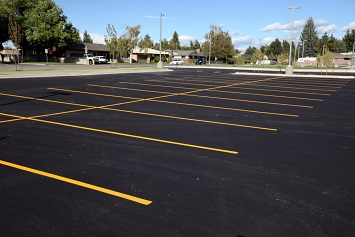Under the Occupational Safety and Health Act, business owners have a responsibility to provide a safe and healthy workplace. While this seems straightforward, what many business owners may not realize is that maintaining a safe work environment can extend beyond their front door and into their parking lot or garage.
Although state laws vary, employers are generally liable for employees who are injured in any area that the employer owns, maintains, or operates. That means employers may be responsible for safety in parking lots and parking garages adjacent to their buildings, as well as the sidewalks.
According to a report issued by the National Safety Council, more than 50,000 crashes occur in parking lots and garages each year, causing 500 or more deaths and more than 60,000 injuries. Like any workplace accidents, they can lead to unforeseen direct and indirect costs to the business owner, including lost productivity, lower employee morale, costs associated with hiring and training a replacement worker, and workers’ compensation insurance claim costs.
To offset potential parking lot hazards, here are four parking lot safety tips small business owners can follow to keep their employees safer at work.
- Establish a clear traffic flow. In a parking lot, drivers may be backing up or driving the wrong direction and not focused on pedestrians. Keep parking lot traffic moving in a consistent direction by installing signage and directional arrows to guide vehicles, especially near blind spots. Use highly visible striping and paint to identify two-way traffic, parking spaces, emergency vehicle lanes, handicapped spaces, and pedestrian crosswalks. Reinforce with your employees the need to always be aware of their surroundings.
- Provide adequate lighting. Proper lighting and visibility can improve parking lot safety and help reduce the likelihood of injury, property damage, theft, or violence. Pay special attention to exterior lights behind buildings and near entrances. Make sure dumpsters and recycling receptacles are in well-lit areas and as near to the building as possible. It is also a good idea to conduct periodic maintenance checks, replacing burned-out or broken lights and checking to see that trees and shrubs are not blocking lighting fixtures. Employees should be encouraged to park near the parking attendant if one exists or in well-lit areas.
- Maintain the pavement. Make sure potholes are filled in and cracks are sealed to prevent slips, trips, and falls. Routinely check striping and paint to make sure parking spaces and direction signs are clearly noted and touch up the paint as needed.
- Prepare for inclement weather. In many parts of the United States, winter parking lot safety may require special attention. Inclement conditions can create slick, icy, or wet patches, increasing the risk of employee slips, trips, and falls. Use deicing agents and shovel walkways, entries, and exits to improve building access, or consider hiring a maintenance crew to clear snow.
Creating a safer workplace—both indoors and outdoors—requires an ongoing effort and commitment from business owners and managers to proactively address any potential hazards. For more information on creating a safer workplace, contact your workers’ compensation carrier.
| Dan Killins is Loss Control Program Manager for EMPLOYERS®, America’s small business insurance specialist®, which offers workers’ compensation insurance and services through Employers Insurance Company of Nevada, Employers Compensation Insurance Company, Employers Preferred Insurance Company, and Employers Assurance Company. Not all insurers do business in all jurisdictions. EMPLOYERS and America’s small business insurance specialist are registered trademarks of Employers Insurance Company of Nevada. For more information, e-mail losscontrol@employers.com. |

